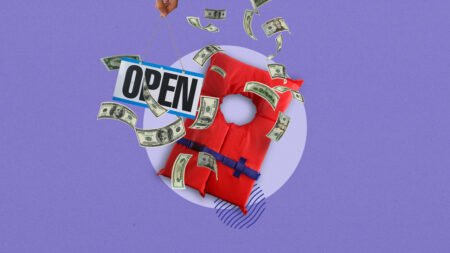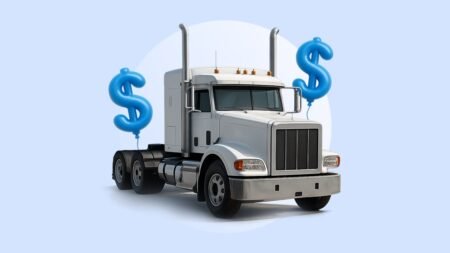Key takeaways
- Equipment loans are self-secured, which means they are secured by the equipment being purchased.
- Because the loan is automatically secured, equipment lenders may be more lenient on other qualification requirements, such as credit score or length of time in business.
- Equipment leases and sale-leasebacks can also be used to finance equipment.
Equipment loans are a good resource when your business needs equipment it can’t buy outright. They are backed by the equipment as collateral, helping you get approved for funding and possibly leading to lower interest rates.
When getting equipment financing, you’ll need to choose from an equipment loan or lease, depending on whether you want to own the equipment or need the most up-to-date equipment for your business. Then, you’ll need to assess the lender, including its qualifications to apply, and the loan features such as its terms and fees. Follow these steps to get an equipment loan that works best for your situation.
What is an equipment loan?
An equipment loan is a small business loan you can use to help fund equipment for a business. Small business equipment loans work similarly to any other business loan, and they are offered by many types of lenders. You can use the loan to buy, repair or replace equipment.
Business equipment is any tangible asset that you use for your business. This includes company vehicles, machinery, computers and furniture. It also includes any equipment you might need when you’re just opening the business, though it can be difficult to find startup loans.
Equipment financing vs. leasing
In addition to an equipment loan, you may also consider an equipment lease or a sale-leaseback. With leasing, you pay a monthly price to rent equipment and either purchase or return it at the end of your leasing period. This can work well if you find yourself having to update business equipment frequently.
If your business has money tied up in equipment, a sale-leaseback allows you to sell it, and then lease it from the purchaser. While you will have a monthly payment, money from the sale can help free up working capital.
Here are the key differences:
|
Equipment loan |
Equipment lease |
Sale-leaseback |
|
Your business owns the equipment as soon as the purchase is made. |
You don’t own the equipment until it is paid off and you agree to buy it fully. You also have the option to return the equipment at the end of the lease period. |
Your business sells its equipment and leases it back through the purchaser, freeing up working capital. |
|
Down payment often required. |
No down payment required. |
No down payment required. |
|
Loan terms can be up to 10 years. |
Typically come with a shorter term than a loan. |
Often longer loan terms, though length depends on lender. |
If you don’t qualify for a traditional business loan, you could look into an SBA 504 loan. This loan is backed by the U.S. Small Business Administration and is designed to help small businesses buy fixed assets like equipment
How to get equipment financing
When getting equipment financing, you can find a variety of lenders that offer both loans and leases. Consider the type of financing you need while comparing multiple lenders to find the most cost-effective option.
1. Know what kind of equipment you want and its cost
When you apply for a loan, the lender will request information about the equipment you plan to purchase, and how it fits into your business operations. The equipment determines the loan amount, and it also gives them information on how the equipment will secure your loan. The lender may request a quote from an equipment vendor to verify the equipment cost as a part of the application process.
Before you apply for an equipment loan, make sure you understand the full loan amount and the monthly payments. Use a business loan calculator to get an idea of your potential monthly payment. Then, you can see whether you can easily manage the equipment loan cost within your business budget.
2. Assess your qualifications
When it comes to equipment financing, lenders will typically look at the length of time you’ve been in business, your business credit score and annual revenue to decide if you qualify for a loan.
Online lenders will typically have more lenient requirements than banks or credit unions. However, traditional lenders tend to offer the best interest rates and repayment terms. Typical qualifications to get a small business equipment loan:
- Time in business: At least two years in business is the standard requirement, although you may be able to qualify for a startup equipment loan. Some online lenders consider businesses as young as six months.
- Credit score: Your personal and business credit score will also play a big role in your eligibility. Many lenders will want to see that each owner has fair credit — at minimum. It may also consider your business credit score if your business has previously taken on debt.
- Annual revenue: A bank will typically require a higher annual revenue than online lenders, such as $150,000 to $250,000. But even the most lenient online lender, Funding Circle, has a minimum annual revenue requirement set at $50,000 for its equipment loans.
Bankrate insight
Qualifications vary from lender to lender, and they may have other factors they check to decide if your business qualifies for the loan. Some lenders may require you to have a business checking account if you don’t already. Talk to specific lenders to find out what exactly you need.
3. Seek lenders that match your qualifications and needs
Both traditional lenders — like banks and credit unions — and online lenders offer small business equipment loans. There are even lenders that specialize in equipment loans, such as TAB Bank and Triton Capital. In many cases, lenders offer large loans with long terms to fund larger equipment expenses.
Research several options and look for lenders that best fit your needs, such as:
|
Loan Amount |
Min. Time in Business |
Min. Annual Revenue |
|
|
Creditfy |
Up to $10 million |
6 months |
$240,000 |
|
SMB Compass |
$10,000 to $10 million |
6 months |
$100,000 |
|
National Funding |
$5,000 to $500,000 |
1 year |
$100,000 |
|
Triton Capital |
$10,000 to $500,000 |
1 year |
$350,000 |
|
Bank of America |
Starting at $10,000 |
2 years |
$100,000 |
This is not a definitive list. Check local banks and credit unions in addition to nationally available options to find a lender that fits your business’s needs.
4. Compare lenders and loans
Once you’ve found some lenders with loan options you likely qualify for, compare your options. The right lender may differ for each business. If the lender offers a way to prequalify with a soft credit pull, use it. This will let you compare rates and amounts without hurting your credit score.
There are several factors to consider when comparing equipment loans. Consider interest rates, fees, down payments and other factors to compare each lender’s options. Take in the full picture of the loan costs and how the payments will impact your business.
- Loan amount: The loan amount varies by lender, but expect it to cover between 80 and 100 percent of the equipment’s cost.
- Down payment: An equipment loan may require a down payment between 10 and 20 percent.
- Interest rate: Both your business’s creditworthiness and current market forces impact business loan interest rates. Rates can range from the single digits to well over 30 percent.
- Repayment terms: Repayment terms typically range from six months to five years, though some lenders offer longer terms. Some lenders may offer multiple payment frequency options, such as monthly, quarterly, semi-annual or annual payments.
- Fees: Common business loan fees include administrative fees, application fees, late fees and origination fees. Some fees are flat, but others may equal a percentage of the loan amount, potentially tacking on thousands in added costs.
- Payment reporting: Equipment loans can help you build your business credit score. Confirm with each lender if payments are reported to any credit bureaus, such as Dun & Bradstreet, Equifax or Experian.
- Pre-approval period: Lenders may give you a bit of time to shop around and find the best deal on your equipment.
Take in the full picture of the loan costs and how the payments will impact your business. Consider interest rates, fees, down payments and other factors to compare each lender’s options.
5. Gather documents and apply
When you are ready to apply, take your time to prepare your loan application and the required documents. You will typically need to provide documents that provide business financial information and prove your business exists. Typical documents include:
- Business license and registration
- Business plan
- Business bank statements from the past year
- Business tax returns from the past three years
- Current financial statements, such as accounts receivable, balance sheet and income statement
Understand the specific requirements of your lender to help you gather exactly what you need.
Bottom line
Getting an equipment loan can help you access important equipment using up all your capital on hand. You’ll need to research a variety of lenders to find the best rates and to see whether your business matches their qualifications.
Consider the type of loan or lease you need and which lender offers you the best loan terms. You can typically find small business equipment loans with high loan amounts and long or flexible repayment terms, such as offering semi-annual or annual payments. Having these repayment terms helps you effectively manage the equipment loan repayments.
Frequently asked questions
Why we ask for feedback
Your feedback helps us improve our content and services. It takes less than a minute to
complete.
Your responses are anonymous and will only be used for improving our website.
Help us improve our content
Read the full article here

















